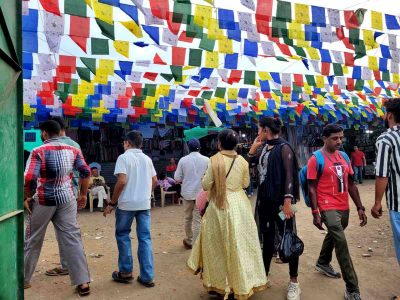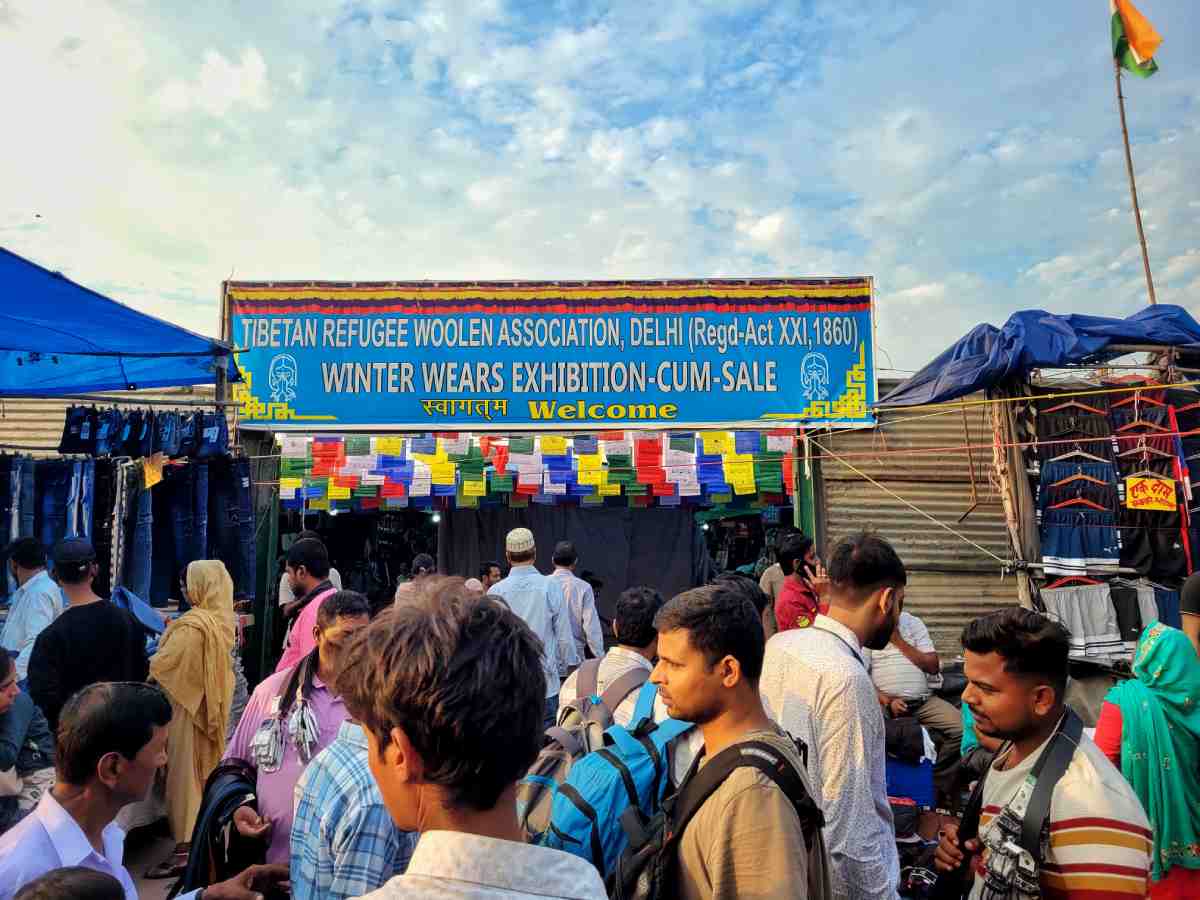The tibetan Refugee Market, a cherished seasonal tradition near Delhi’s Red Fort, has reopened for the winter season.
Operating annually from October to mid February, this vibrant marketplace draws artisans and vendors from regions like Ladakh, Himachal Pradesh, Jammu and Kashmir, Darjeeling, Odisha, and Arunachal Pradesh. With its emphasis on quality handmade goods, it has become a favoured destination for Delhiites in search of winter essentials.
Since 1965, the market has attracted visitors seeking premium woollen products and traditional craftsmanship.
At the heart of the Tibetan Refugee Market is its commitment to craftsmanship. Unlike other markets, prices here are fixed, reflecting the value of the work involved and removing the need for haggling. The market’s reputation for authenticity and durability has earned it a loyal customer base over the decades. Visitors can find an array of products, including sweaters, shawls, gloves, jackets, and other warm garments designed to last through the harshest winters.
Also read: The unsettling history of 33 Shamnath Marg: Once abode of Delhi’s Chief Ministers
“We bring new collections each year to match changing trends,” shared the market’s Vice President, Sonam Topgyal. “Our focus remains on delivering handmade products that not only meet customers’ needs but also showcase artistic creativity.” However, the market has faced several challenges in recent years. From a peak of over 200 stalls, the number has dropped to 138.
According to Topgyal, the decline reflects both demographic and economic shifts. “Many elderly artisans who used to run stalls have passed away, and the younger generation is less inclined to continue the family trade,” he explained. Competition from shopping malls and e-commerce platforms has further complicated matters. “Consumers are leaning towards machine made products, but we continue to promote handmade items because we believe in their lasting value,” he said.

To adapt, the market now takes online orders during the off-season and displays these finished products once the market reopens. This commitment to preserving craftsmanship amidst changing times reflects the larger mission of the Tibetan Refugee Market. It is part of a network of 237 such markets across India, overseen from a central office in Ludhiana. Despite the rise of online shopping and the appeal of fast fashion, the market remains a vital source of livelihood for Tibetan refugees and an avenue for safeguarding their cultural heritage.
Rayees, a Kashmiri vendor who has participated in the market for seven years, emphasised the joy of interacting with customers. “Every year we bring new designs to stay relevant. The quality of our products speaks for itself, and the prices are reasonable. I enjoy coming back here, especially to see familiar customers who trust our work.”
The Tibetan Refugee Market not only provides financial support to artisans but also offers a platform for cross-cultural exchange. Visitors have the opportunity to learn about unique craftsmanship from different regions of India, fostering a deeper appreciation for handmade products.
Also read: Himmat Singh-led Delhi looks to end 16-year Ranji Trophy title drought this season
Now in its 60th year, the market continues to welcome visitors from 9 am to 7 pm, seven days a week. With enhanced security measures, including CCTV surveillance, the market ensures a safe environment for both artisans and shoppers.
“This market is more than just a place to shop,” Topgyal noted, adding, “It’s a celebration of heritage, skill, and community spirit. We invite everyone to experience the difference that handmade products bring.”
As winter sets in, the Tibetan Refugee Market stands as a reminder of the beauty of craftsmanship in an age of mass production, offering not just products, but stories woven into every stitch.





